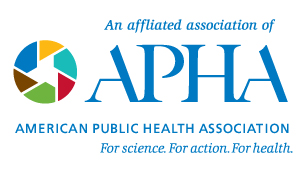Accessibility Guidelines for Presenters
The OPHA conference planning team has partnered with the Disability Section to make accessibility a priority for the annual conference. Please review the following information to make our sessions accessible for all attendees. The following information has been provided by APHA’s Disability Section and reviewed by OPHA Disability Section.
For Oral Presenters
For Poster Presenters
Presentation Tips
Creating Accessible PowerPoint
For complete step by step guidance go to WebAim Microsoft PowerPoint Accessibility or Prezi Accessibility. WebAim also offers accessible PowerPoint templates. All slides must be accessible and compatible with screen readers.
A few quick tips:
- If you include images or graphs, always add Alt Text.
- Use a font size of 20 or greater.
- Use sans serif fonts such as Calibri or Arial.
- Use contrasting colors (white text on dark background or dark text on a light background).
- Use plain language. See CDC's guidelines.
- Check accessibility using your PowerPoint Accessibility Tool.
- If a video is included in your presentation it must have captioning.
Creating Accessible Posters
- Main findings should be between 72- and 150-point font
- All other text should be at least 36-point font.
- Use sans serif fonts such as Helvetica, Arial, or Verdana
- Make sure font colors contrast with the background, such as black text on a white background or white text on a dark background.
- Use between 1.2 and 2.0 line spacing.
- Have your research and graphs available in a QR code for attendees who are blind/low vision to access or for any attendee to view later. QR code should be at least 5"x5".
- Online materials shared in a QR code should be screen reader accessible. See guidance under “Presentation Handouts” below.
- Do not place text over images.
- Use 300 dots per inch, or dpi, when saving images. Avoid copying and pasting images from the web that are below 250Kb.
- For a new generation of research poster tips, watch: How to create a better research poster in less time by Mike Morrison
Presentation Tips
- Read aloud everything on your slide
- Always describe the images or figures. For example, “The image on this slide shows a woman riding a bike on the new two-lane bike path”.
- Use descriptive language for figures and graphs. For example, “this map of Montana shows…” rather than saying “this shows”.
- Speak loudly, clearly and directly into the microphone at a moderate pace.
- Use active words and short sentences. Words should reinforce visual material.
- APHA has a diverse membership base. It is imperative that information shared is accessible to all attendees and all attendees feel respected in that space.
- Use inclusive and culturally sensitive Language
|

